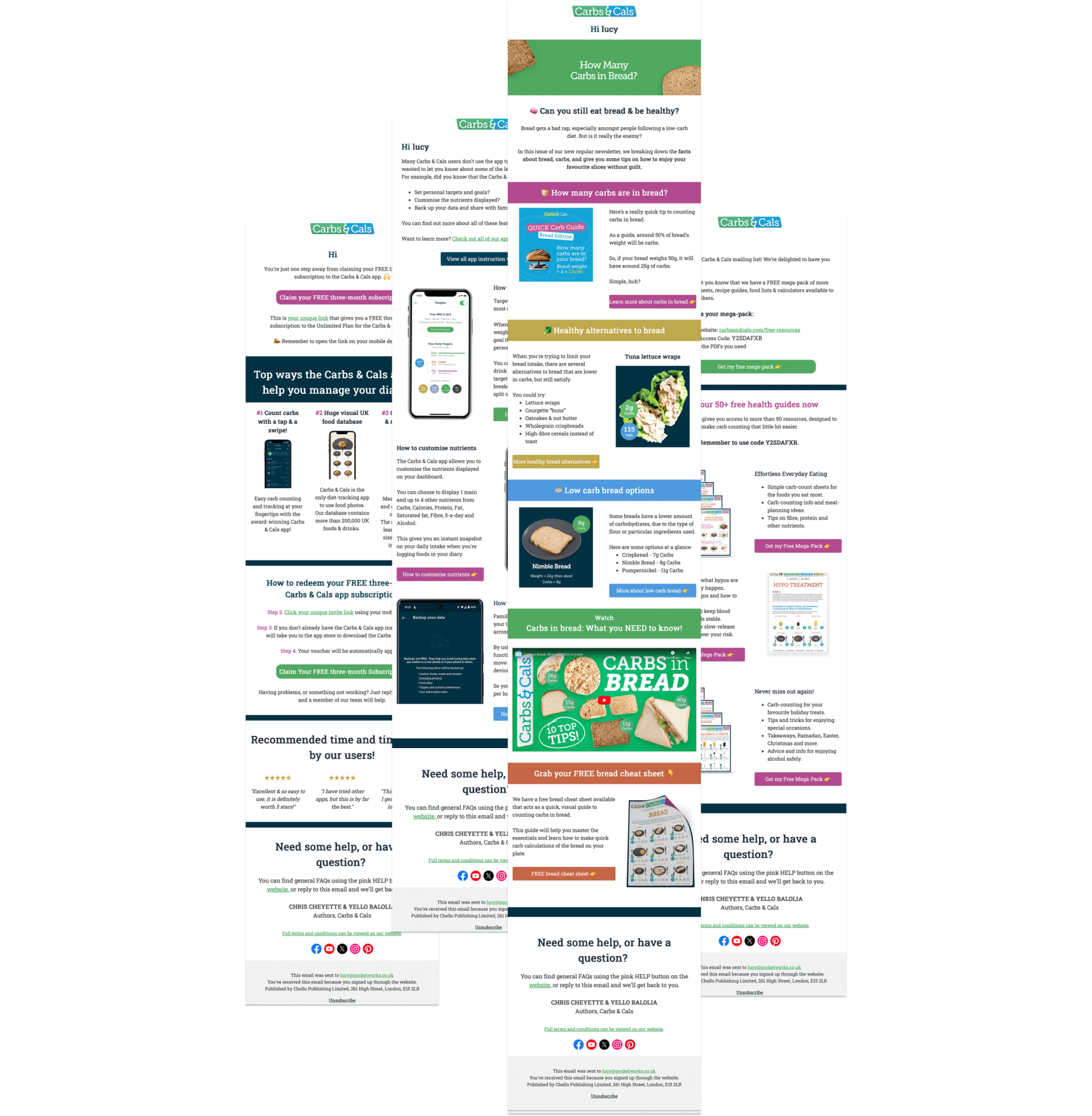Pasta and noodles are beloved worldwide for their versatility and comfort-food appeal, but if you’re watching your carbohydrate intake, you might wonder whether this staple can fit into your healthy eating plan.
The good news is that understanding carbs in pasta and noodles doesn’t have to be complicated. Whether you’re managing diabetes, trying to lose weight, or simply want to make more informed food choices, knowing the carb content can help you enjoy your favourite dishes while staying on track with your nutritional goals.
This guide will walk you through everything you need to know about carbs in pasta & noodles, including how cooking affects carb content, the benefits of whole grain options, and smart strategies for making dishes healthier, without sacrificing flavour.
How many carbs in pasta?
Pasta is a type of noodle that comes in a dizzying array of shapes and sizes, from small macaroni to lasagne sheets. Pasta can be bought fresh or dried and can also come with a filling, such as ravioli and tortellini.
Pasta dishes can be high in carbs, which can be a problem for weight loss and diabetes management if you consume large amounts. In addition, pasta also contains gluten, a type of protein that can cause issues for those who have coeliac disease or are gluten-sensitive. The main factor that determines the amount of carbs in your pasta is the portion or serving size. A typical portion of pasta is between 50g to 70g of carbs.
Uncooked pasta has a higher carb value per 100g than cooked pasta. This is because when the pasta is cooked, it takes on water, which increases its weight. That is why 100g of uncooked pasta has around 70g of carbs, compared to 100g of cooked pasta that has only 30g of carbs.
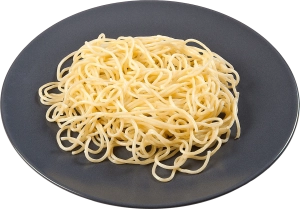
There are typically 50g of Carbs in a serving of white pasta (158g portion).
Nutrients in whole wheat pasta vs white pasta
There is a variety of different types of pasta, and for the same portion size, whole wheat pasta usually contains less carbohydrate than white pasta. Whole wheat pasta also contains a higher amount of fibre and a greater nutritional value than white pasta. This can be up to double the amount of fibre, depending on the brand.
The fibre in wheat flour is retained, rather than having to be added back in as in refined or white flour. This is why whole wheat pasta may be more filling. In addition, because whole wheat pasta is made from flour that has not been refined, it usually contains more nutrients such as iron, calcium and B vitamins than white pasta.
Whole wheat pasta usually contains fewer calories for the same portion size, compared to white pasta. For example, the whole wheat pasta portion here has 26 fewer calories. By eating more wholegrain foods throughout the day, you reduce calories and increase fibre.
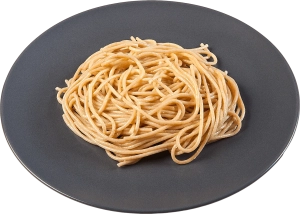
58g
Carbs
Whole Wheat Pasta
Weight = 200g
Carbs = 58g / Cals = 288 / Fibre = 7g

63g
Carbs
White Pasta
Weight = 200g
Carbs = 63g / Cals = 314 / Fibre = 3g
Is whole wheat pasta healthier?
Whole wheat pasta is made from the entire wheat kernel. As a result, they are higher in fibre, vitamins and minerals compared to white pasta. Eating whole grains also has health benefits and has been linked with a lower risk of heart disease, obesity and other metabolic diseases such as diabetes.
In addition, whole wheat pasta has a lower glycemic index, meaning it raises blood sugar levels more slowly than white pasta. However, keep in mind that portion size is still important, and if you eat a larger portion of whole wheat pasta than you would white pasta, then it will still have more of an effect on blood glucose.
If you are trying to lose or manage your weight, having whole grains compared to refined foods, such as white pasta, may help keep you fuller after a meal. Whole wheat pasta is lower in calories and higher in fibre, helping you feel fuller for longer.

A portion of whole wheat spaghetti typically has 50g of Carbs and 6g of Fibre (weight = 172g).
How to make pasta healthier
When eaten in moderation, pasta can be part of a healthy diet. Portion size is important when it comes to pasta, and it is a good idea to weigh out the amount of pasta per person before you cook it. It’s all too easy to cook more than you need if you pour the dry pasta from the pack. Aim for 50g to 75g of dry pasta per person.
Of course, in addition to the type and amount of pasta you have, what you top it with is also important. Carbs and calories can stack up quickly when adding high-fat or high-calorie toppings like cheese and cream-based sauces.
Try to use a tomato sauce rather than a cream sauce. In the examples shown below, you’ll see that the carbonara has significantly more calories and fat than the spaghetti bolognese. Adding plenty of vegetables to your dish helps to boost fibre and antioxidants. Finally, go easy on the cheese! Cheese can add significant calories and saturated fat to your pasta dish.
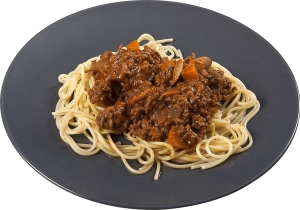
45g
Carbs
Spaghetti Bolognese
Weight = 300g (120g spag, 180g bol)
Carbs = 45g / Cals = 307
Fat = 9g / SatFat = 3g
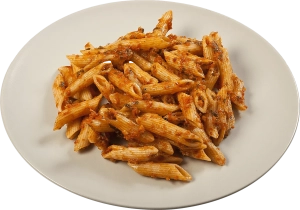
58g
Carbs
Penne Arrabbiata
Weight = 300g
Carbs = 58g / Cals = 312
Fat = 4g / SatFat = 2g

47g
Carbs
Spaghetti Carbonara
Weight = 300g
Carbs = 47g / Cals = 515
Fat = 25g / SatFat = 14g
Carbs in noodles
Noodles and pasta are basically the same thing. They are both traditionally made from wheat, flour, egg and water. This means the carb content for noodles is similar to pasta per 100g, and the important part is still the serving size. Some noodles are made with different types of flour or do not contain egg. This will naturally affect their carb content. Rice noodles are a good example of this.
The thickness of the noodle will have an impact on its carb content. For example, thick egg noodles contain more carbs than thinner, soba or rice noodles. Similar to pasta, it is possible to buy high fibre noodles, such as whole wheat noodles, buckwheat or brown rice noodles.
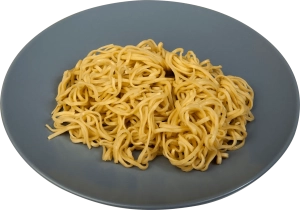
39g
Carbs
There are typically 39g of Carbs in a serving of egg noodles (150g portion).
Carbs in rice noodles
A typical portion of rice noodles contains between 50g to 70g of carbs. Brown or wholegrain noodles have a higher fibre and lower carb content than rice noodles.
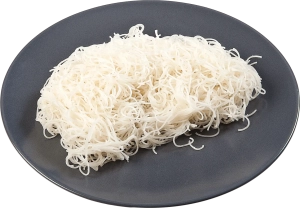
60g
Carbs
Vermicelli Rice Noodles
Weight = 215g
Carbs = 60g
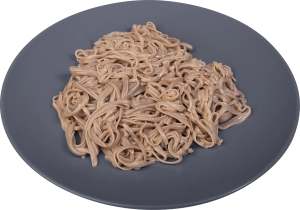
69g
Carbs
Buckwheat Soba Noodles
Weight = 200g
Carbs = 69g
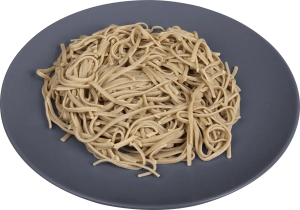
58g
Carbs
Brown Rice Noodles
Weight = 225g
Carbs = 58g
Carbs in egg noodles
Egg noodles typically come in either fine or medium thickness. A typical portion of egg noodles contains 40g to 60g of Carbs.
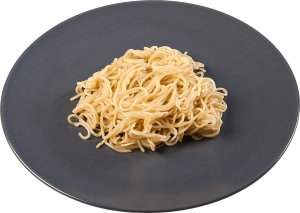
32g
Carbs
Fine Egg Noodles
Weight = 115g
Carbs = 32g

39g
Carbs
Medium Egg Noodles
Weight = 150g
Carbs = 39g
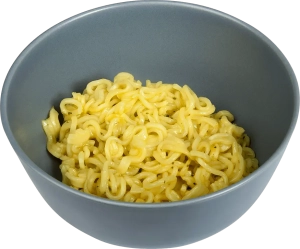
29g
Carbs
Instant Noodles
Weight = 140g
Carbs = 29g
Low carb pasta alternatives
There are a variety of alternatives that you can use instead of pasta and noodles if you are on a low carb diet and are trying to lower your carb intake. Think about the dish you are preparing and what might make a good alternative. For example, if making a lasagne, instead of lasagne sheets, you could use aubergine and/or courgette slices.
Another low carb alternative to pasta is certain squashes, such as spaghetti squash or acorn squash. They are naturally lower in carbs but still packed with other beneficial vitamins and are a good source of fibre. Red lentil pasta is a great alternative to normal pasta. It is high in fibre and still looks and tastes like pasta.
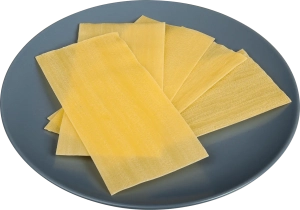
63g
Carbs
Lasagne Sheets
Weight = 90g (uncooked)
Carbs = 63g
↓ SWAP TO ↓
SWAP TO →
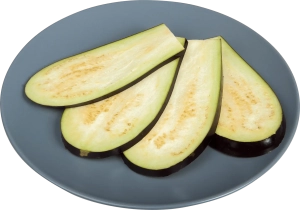
3g
Carbs
Sliced Aubergine
Weight = 160g (uncooked)
Carbs = 3g

50g
Carbs
White Spaghetti
Weight = 158g
Carbs = 50g
↓ SWAP TO ↓
SWAP TO →
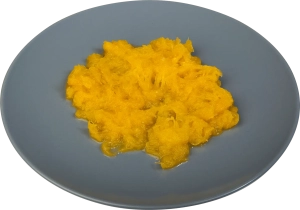
7g
Carbs
Spaghetti Squash
Weight = 160g
Carbs = 7g

50g
Carbs
Wheat Pasta
Weight = 172g
Carbs = 50g
↓ SWAP TO ↓
SWAP TO →
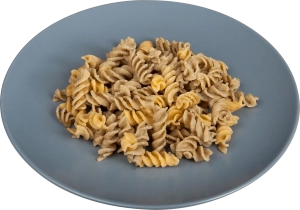
40g
Carbs
Red Lentil Pasta
Weight = 150g
Carbs = 40g
Low carb alternatives for noodles
For a low carb alternative for noodles in stir-fry dishes, try going without noodles entirely and make a low carb stir-fry such as cashew stir-fry, or chicken & oyster mushroom stir-fry.
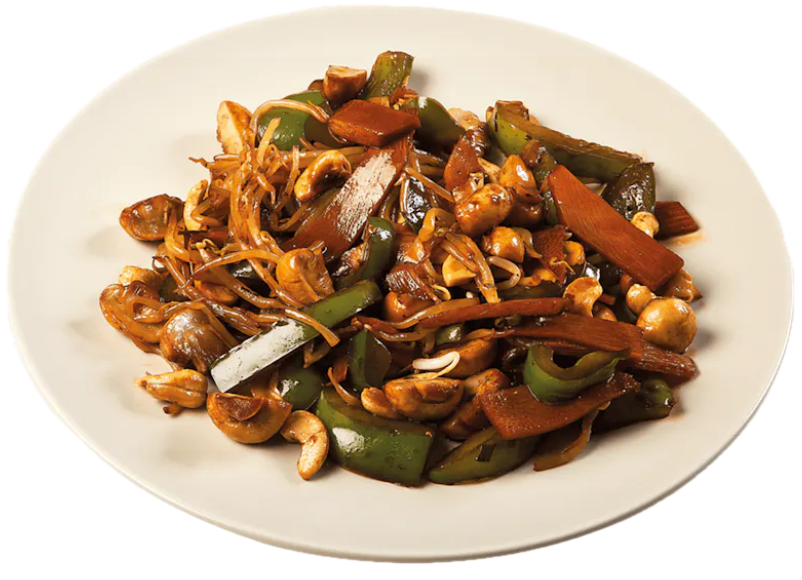
11g
Carbs
Cashew stir-fry (without noodles)
Per portion (300g):
Carbs = 11g / Cals = 309
Low carb pasta options
Some companies are now making low carb pasta, such as Slim Pasta, Better Than, and CarbZone. It is important to keep in mind that these low carb pasta products are normally also low in other nutrients such as protein and fibre. This could lead to you feeling less full after eating. You may need to add more protein and veggies to your pasta dish to bulk it out.
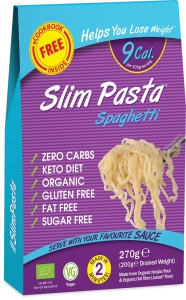
0g
Carbs
Slim Pasta
Per portion:
Carbs = 0g / Cals = 24
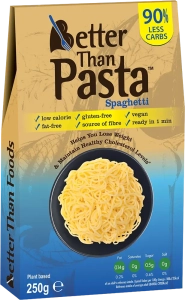
0g
Carbs
Better Than Pasta
Per portion:
Carbs = 0g / Cals = 24
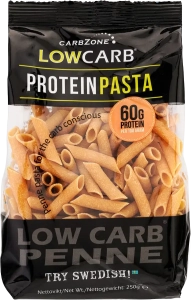
6g
Carbs
CarbZone Low Carb Pasta
Per portion:
Carbs = 6g / Cals = 150
A balanced note on low‑carb swaps
We understand that low‑carb eating isn’t for everyone, and we’re not suggesting it’s healthier, just that it may suit some preferences or dietary goals.
While the pasta alternatives suggested can help reduce carbs, they may also be lower in calories, fibre, or certain nutrients. If you’re choosing lower‑carb options, it’s important to focus on nutritional balance, including plenty of vegetables, unprocessed foods, lean protein and fibre, to support overall health.
How many carbs in restaurant pasta & noodle dishes?
When you eat out at a restaurant, the carb content of pasta and noodle dishes may be different from what you are used to at home. Portions are often larger and it is hard to control the extras such as sauces and cheese that are added. This loss of control over serving sizes and what is included in your dish can put some people off eating out.
Thankfully, the Carbs & Cals app contains a wide selection of well known restaurant chains with all the nutrition facts to help reduce the guesswork and support your healthy eating.
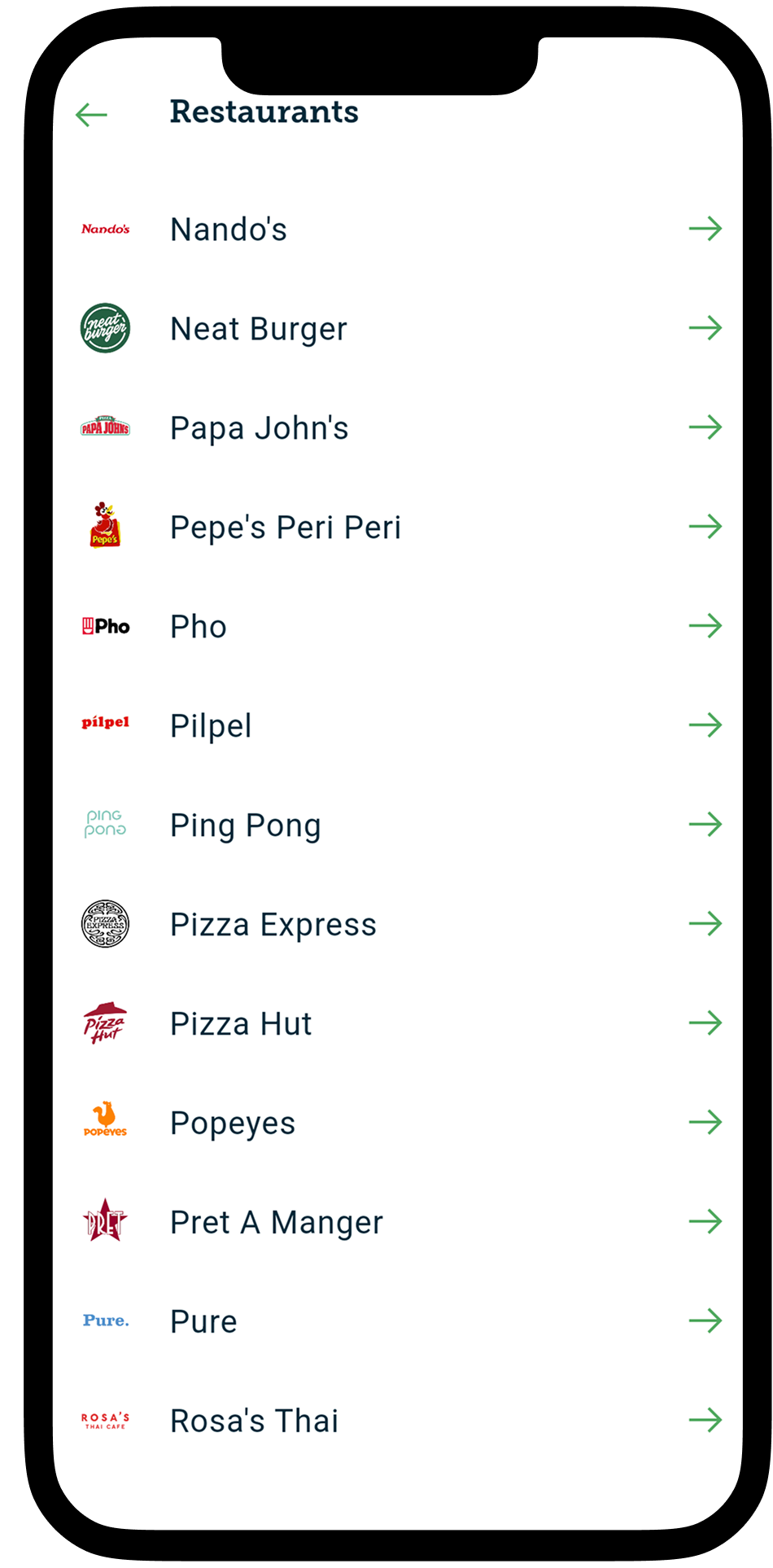
Carbs in restaurant pasta dishes
If you are trying to estimate the carbs in a pasta dish for your meal plan, a useful tip is to compare it to what you would have at home and decide if it is more, less or the same as your typical portion. When choosing healthy foods while eating out, when it comes to pasta dishes, we recommend picking dishes with extra vegetables and a tomato sauce, rather than a creamy one.
In the three examples below, you can see the carbs vary from 76g to 112g. This is a wide variation and can be difficult for you to estimate. The Carbs & Cals app contains the nutritional facts for a wide number of well known restaurant dishes.
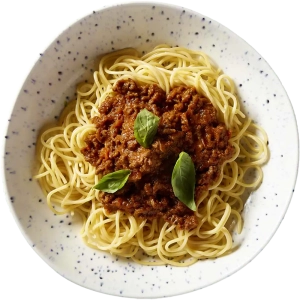
106g
Carbs
Bolognese Spaghetti
(Bella Italia)
Per portion:
Carbs = 106g
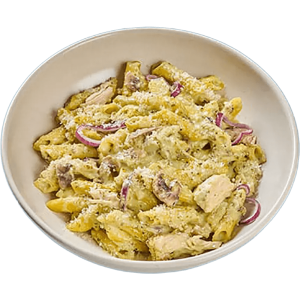
74g
Carbs
Pollo Pesto Penne
(Pizza Express)
Per portion:
Carbs = 74g
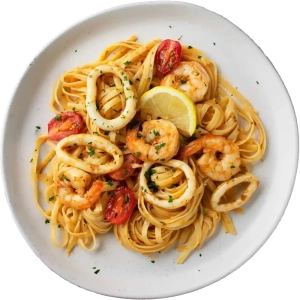
67g
Carbs
Seafood Linguine
(Ask Italian)
Per portion:
Carbs = 67g
Carbs in restaurant noodle dishes
Noodle dishes tend to be lower in carbs and calories compared to pasta dishes, as they typically contain more vegetables and less heavy cream-based sauces. However, there are so many options and dishes on offer, and the portion size will, of course, play a key part in determining the number of carbs.
In the example below, you can see 3 popular noodle dishes from Wagamama: Ramen, Pad Thai and a lower carb Glass Noodle Salad. You can see a wide variation with the glass noodle salad having around half the carbs of the other two dishes.
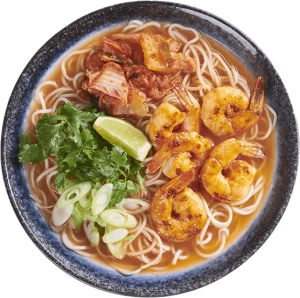
84g
Carbs
Chilli Prawn & Kimchee Ramen
Per portion:
Carbs = 84g
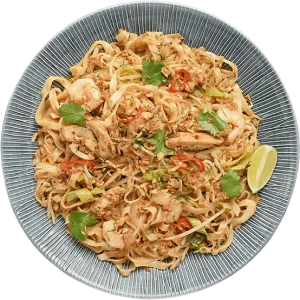
87g
Carbs
Chicken & Prawn Pad Thai
Per portion:
Carbs = 87g

39g
Carbs
Tofu Harusame Glass Noodle Salad
Per portion:
Carbs = 39g
Want to Learn More?
Grab a copy of Carb & Calorie Counter
The multi-award-winning Carb & Calorie Counter book is your definitive, expert-approved guide to carb and calorie counting.
- Over 1700+ high-quality food photos
- Up to six portion sizes per food
- At-a-glance carbs and key nutrients
- The Original #1 Bestseller
With the “Carb-Counting Bible”, a single flick of the page is all you need to plan nutritious, carb-counted meals.
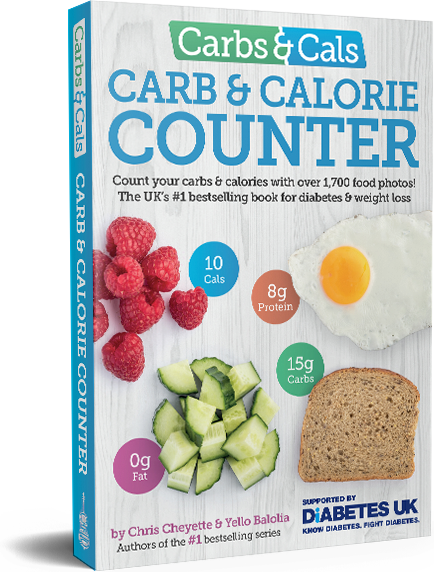
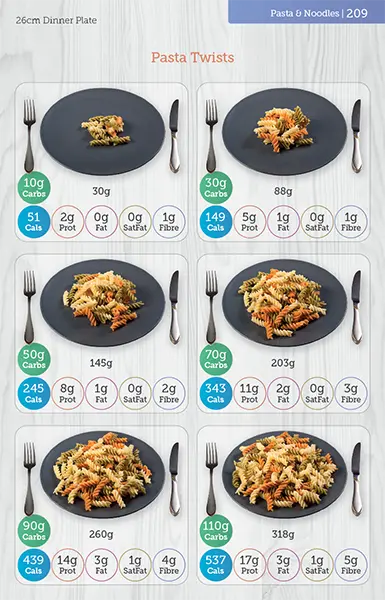
Contains a whole chapter with 86 photos of different types of pasta & noodles!
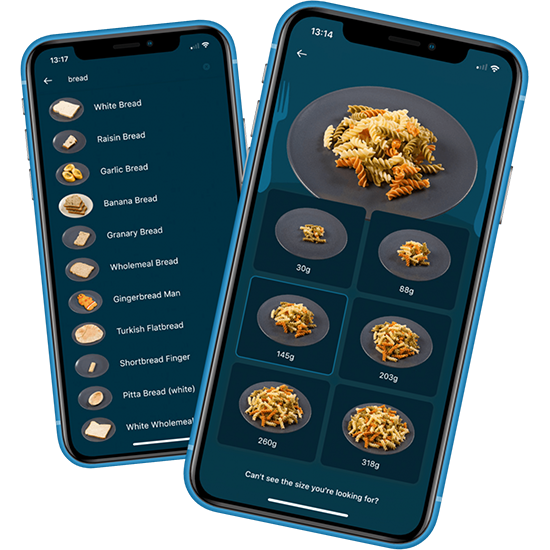
Sign up to the Carbs & Cals mailing list
Want to learn more about carb counting and the role of food in managing your health? Sign up to our mailing list!
